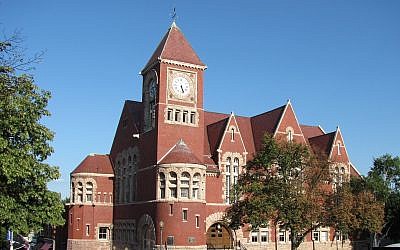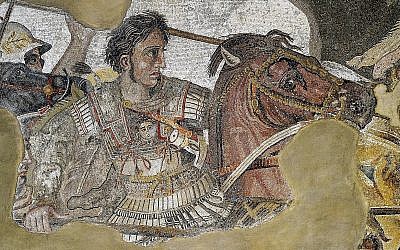Today, Amherst, Massachusetts, is a medium-sized town 80 kilometers (50 miles) from Boston, home to over 40,000 people. But in the 19th century, Amherst was a quiet, unremarkable town, with a much smaller population which, over 100 years, doubled in size from 2,500 to 5,000.
For such a small town, it was home to a significant number of people who made a huge contribution to the world — the poet Robert Frost taught and retired there; Noah Webster, of the eponymous dictionary, lived there; Melvil Dewey, devised the Dewey-Decimal classification system while an assistant librarian in Amherst College; P. D. Eastman, born in Amherst, served in World War II in the Signal Corps film unit, under Theodor Geisel — better known as Dr. Seuss — and went on to illustrate many of his books; the actress Uma Thurman was born and raised in the city.
But for me, the most important resident of Amherst is Emily Dickinson. She was born there in 1830, though she didn’t really become famous until after her death in 1886. During her lifetime, she was better known as a gardener and published fewer than a dozen poems — most of which were modified to conform with a more traditional style.
On her deathbed, Dickinson told her younger sister Lavina to burn all her papers. Luckily for us, Lavina ignored the instruction to destroy the 40 or so notebooks, and instead published the collection of almost 1,800 poems her sister left behind.

Town Hall, Amherst Massachusetts. (CC BY, John Phelan/ Wikimedia Commons)
Dickinson left school at 16, having spent her final year of formal education in Mount Holyoke Female Seminary, in a class of 30 categorized religiously as “without hope.” She was considered eccentric by her neighbors, and from the time she was 30 she mostly lived the life of a recluse, seldom going out of her bedroom, corresponding with her few acquaintances through letters.
But she was never alone. Death was her constant companion, as it was for most Americans in the 19th century.
Even though New England had one of the lowest mortality rates in 19th century USA, the average life expectancy was about 46. During Dickinson’s lifetime, the percentage of children who died before their fifth birthday dropped from over 40 percent to below 30% — still a huge number by modern Western standards. And over 600,000 men died during the Civil War, estimated to be about 10% of all Northern men aged 20-45 and over 30% of white Southern men between the ages of 18-40.
So everyone in the United States knew death intimately. But Dickinson embraced Death as a friend and companion.
Because I could not stop for Death –
He kindly stopped for me –
The Carriage held but just Ourselves –
And Immortality.
Her poetic style and themes were non-traditional, to say the least, and faced critical reception when they were first published. Thomas Bailey Aldrich wrote in the Atlantic Monthly in January 1892 that,
“It is plain that Miss Dickinson possessed an extremely unconventional and grotesque fancy… The incoherence and formlessness of her — versicles are fatal … an eccentric, dreamy, half-educated recluse in an out-of-the-way New England village (or anywhere else) cannot with impunity set at defiance the laws of gravitation and grammar.”
But her poetry resonated with the public. The first volume of her poetry, published four years after her death, went through 11 editions in just two years. Many people were able to connect with and relate to Dickinson’s descriptions of death, loss, immortality and despair.
It was not Death, for I stood up,
And all the Dead, lie down –
It was not Night, for all the Bells
Put out their Tongues, for Noon.It was not Frost, for on my Flesh
I felt Siroccos – crawl –
Nor Fire – for just my marble feet
Could keep a Chancel, cool –And yet, it tasted, like them all,
The Figures I have seen
Set orderly, for Burial
Reminded me, of mine –As if my life were shaven,
And fitted to a frame,
And could not breathe without a key,
And ’twas like Midnight, some –When everything that ticked — has stopped –
And space stares – all around —
Or Grisly frosts – first Autumn morns,
Repeal the Beating Ground —But most, like Chaos — Stopless – cool –
Without a Chance, or spar —
Or even a Report of Land —
To justify — Despair.
Although there are many new and horrible ways in which people die or are killed, nowadays, thanks to modern medicine, hygiene and nutrition, most people in the Western world rarely have to deal directly and personally with death on the scale that our grandparents did. I have many friends who had never attended a funeral until they were in their 20s or 30s. But just a few decades ago, before the discovery and manufacture of penicillin and vaccines, everyone knew death only too well.
This week’s Torah portion begins with restrictions placed on the priests, the descendants of Aharon, known in Hebrew as kohanim. In addition to restrictions on whom they may marry, they are also warned against coming into contact with the dead. Apart from close relatives, priests must keep well away from death. Not only are they forbidden to enter cemeteries, but they may not even be in the same room or under the same roof as a corpse.
The traditional explanation for the extra holiness required of them is that the priests were traditionally the teachers of Torah. The verse states, (Malachi 2:7)
For the lips of the priest guard knowledge, and they should seek Torah from his mouth, for he is an angel of God of Hosts.
As guardians of the Torah and angels of God, they had to keep far away from impurity. This idea of the priest as an angel was most vividly embodied in Simeon the Just, who served as High Priest in the Second Temple for 40 years. The Talmud relates that before Alexander the Great came to Israel in 332 BCE, Simeon appeared to him in a dream and predicted his victory. Alexander had wanted a statue of himself placed in the Temple, but, instead, Simeon promised that all sons of priests born that year would be named Alexander (Leviticus Rabba 13).

The detail of the Alexander Mosaic showing Alexander the Great. (Public Domain./ Wikimedia Commons)
I wonder if there is another, psychological, reason that the Torah insists that priests keep far away from human death. During Temple times, the main task of the priests (at least for the weeks that they were on duty) was to slaughter sacrifices.
Every day, dozens, or sometimes even hundreds or thousands, of animals were killed by the priests, the blood sprinkled and the animals dismembered and burned on the altar (though most of the meat was actually eaten by the priests and those who brought the sacrifices). The priests would spend their days barefoot, wading through the blood which sometimes came up to their knees.

High priest offering a sacrifice of a goat, on the Day of Atonement,; from Henry Davenport Northrop, Treasures of the Bible, published 1894. (Public Domain/Wikimedia Commons)
I remember many years ago, helping supervise the kosher slaughter in New Zealand. I was standing alongside the non-Jewish workers who were removing and sorting the hearts, livers, kidneys and other organs from the chickens, and occasionally ripping off the heads if the machine wasn’t working properly. Though each time, when I first walked into the room, I was an emotional wreck, within a few minutes, I was tossing the carcasses along the line like they were rugby balls.
And I wondered, how was it possible for men and women who spent every day working on the production line dismembering animals to clock out at the end of the day and go out to the pub with their mates, or go home to their families and forget about the death they were surrounded by every day. How could they switch off their emotions and slide back into regular life?
Is it possible that the Torah placed stringent restrictions on the priests to keep far away from human death to constantly remind them of the difference between animals and humans? Because the priests were animal slaughterers and butchers, they had to have extra stringencies to remind them of the importance of human life (and death).
However, even though a priest was forbidden to deal with the body of anyone other than a close relative, there was one case when he was required to personally bury a body.
If a priest (or anyone) came across a body with nobody to take care of it, he had to personally bury the corpse to ensure its dignity. The laws of purity were cast aside in the face of giving a human being a proper funeral.
Washing, dressing, and preparing a body for burial is referred to by the rabbis as chesed shel emet — the true kindness. It is literally a thankless task, motivated solely by concern for those who are unable to help themselves.
The priest, normally kept distant from death, shows the true holiness of life, through this mandated exception to perform this ultimate kindness for others.
